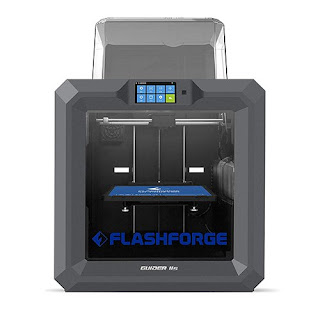3D printing or additive manufacturing is a process of making three dimensional solid objects from a digital file.The creation of a 3D printed object is achieved using additive
processes. In an additive process an object is created by laying down
successive layers of material until the object is created. Each of these
layers can be seen as a thinly sliced horizontal cross-section of the
eventual object.
3D printing is the opposite of subtractive manufacturing which is
cutting out / hollowing out a piece of metal or plastic with for
instance a milling machine.
3D printing enables you to produce complex (functional) shapes using less material than traditional manufacturing methods.
 |
| 3D printing |
How Does 3D Printing Work?
It all starts with the creation of a
3D model in your computer. This
digital design is for instance a CAD (Computer Aided Design) file. A 3D
model is either created from the ground up with 3D modeling software or based on data generated with a 3D scanner. With a 3D scanner you’re able to create a digital copy of an object.
3D Scanners
Currently, prices of 3D scanners range from expensive industrial grade 3D scanners to $30 DIY scanners anyone can make at home. We’ve created a handy guide to scanning technology right here, rating them by price, speed, precision and software capabilities.

Post a Comment